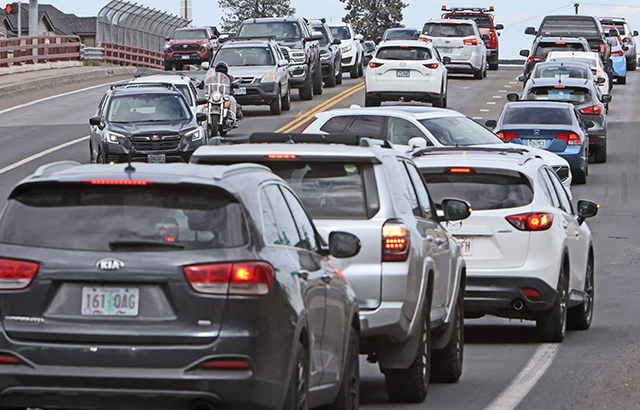‘The Call of the Wild’
Published 2:00 am Thursday, February 27, 2020
It’s hard to believe that a 140-pound CGI dog could make you well up with tears in ‘Call of the Wild,” but here we are.
Jack London’s classic story of the large St. Bernard-Scotch Collie dog has been told and retold again on screen since the first silent film adaptation in 1923. With the newest foray into the Yukon with the dog named Buck, the original story has been pared a little, with thankful omissions of racist overtones and much less animal abuse.
Trending
We follow playful and loyal pooch Buck from his family home in California, where he is stolen and sold to become a sled dog in the wilds of Alaska in the late 1890s. While en route he is starved, neglected and abused by “Red Sweater,” a man with a club to beat the dogs he’s transporting.
Buck learns to mind his new, abusive master, until they reach Skagway and he first meets John Thornton, played by Hollywood’s favorite curmudgeon, Harrison Ford.
Thornton takes a shine to Buck right away, but he’s on his way back to his home in Dawson and Buck is sold to postal carriers, Perrault and his wife/partner, Francoise, who deliver the mail by dogsled. Buck joins their team as a wheel dog in the rear of the pack.
Soon, young Buck learns to live through the cold, harsh wilderness, protecting his fellow dogs and his new owners all the while being visited by the spirit of his canine ancestor. He eventually works and fights his way to the lead position in the team, earning the respect of his team, both human and dog alike. But when the spring comes, Buck and the other dogs are sold to another man, Hal, played by the devilishly good Dan Stevens.
Hal is as cruel as Red Sweater, promising to beat and whip the malnourished team as they struggle to make their way to his gold claim outside Dawson. Thornton sees this cruelty and cuts Buck free before it’s too late and nurses him back to health.
Thornton as it turns out is struggling, too. He is in mourning for a son who has died and the wife he left behind in the U.S. But as soon as Buck has recovered the two embark on a journey off the map into the wilderness, and eventually find themselves.
Trending
The choice to make all the animals in the film CGI is, at first glance, weird. Once you see what Buck goes through, it becomes much more understandable as to why they opted for the computer-generated dog, but it can still be pretty jarring especially with any human-animal interactions. And once you make the main animal fake, you kind of have to continue the illusion with every other one as well.
Since Buck is the main character he has the most screen time and the largest arc to complete.
So you need to either have the world’s best trained, most expressive dog on earth, or animate the creature. For the most part, though, you can get past the uncanny valley effect that Buck exudes throughout.
It’s Harrison Ford that seals the emotional punches. He can sometimes feel like he’s phoning in performances, but not here. Ford brings a subtle gravity of the human element to a story that could have been overridden by animated gimmicks, and he’s able to ground it.
It would have been very easy to have “Call of the Wild” go the route of another film that relied heavily on computer-generated animals and miss the point of the story entirely. Lucky for audiences everywhere, the source material has enough gravitas to avoid that fate.
“Call of the Wild”
100 minutes
Rating: PG for some violence, peril, thematic elements and mild language
3 stars








